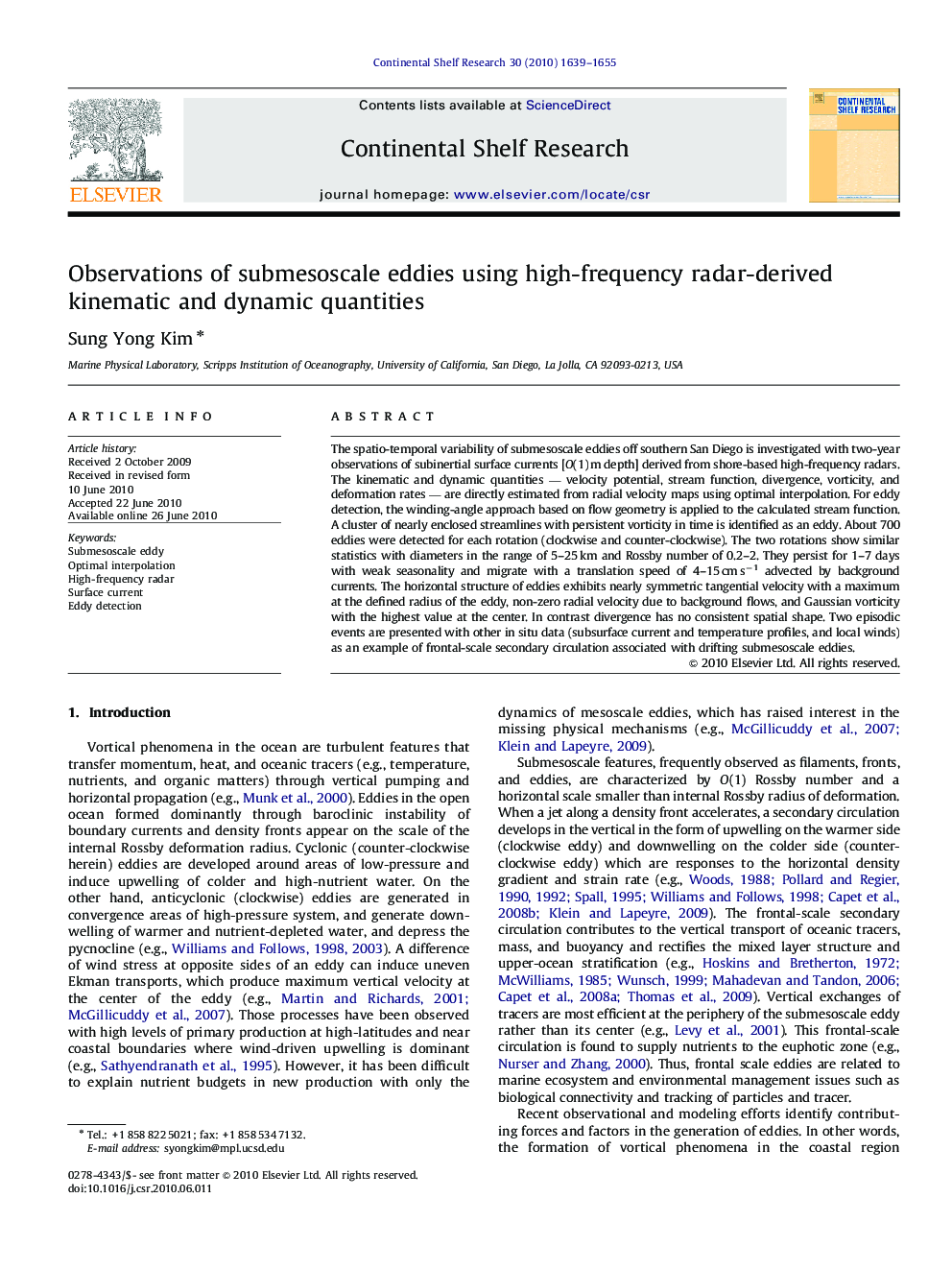| Article ID | Journal | Published Year | Pages | File Type |
|---|---|---|---|---|
| 4532851 | Continental Shelf Research | 2010 | 17 Pages |
The spatio-temporal variability of submesoscale eddies off southern San Diego is investigated with two-year observations of subinertial surface currents [O(1) m depth] derived from shore-based high-frequency radars. The kinematic and dynamic quantities — velocity potential, stream function, divergence, vorticity, and deformation rates — are directly estimated from radial velocity maps using optimal interpolation. For eddy detection, the winding-angle approach based on flow geometry is applied to the calculated stream function. A cluster of nearly enclosed streamlines with persistent vorticity in time is identified as an eddy. About 700 eddies were detected for each rotation (clockwise and counter-clockwise). The two rotations show similar statistics with diameters in the range of 5–25 km and Rossby number of 0.2–2. They persist for 1–7 days with weak seasonality and migrate with a translation speed of 4–15 cm s−1 advected by background currents. The horizontal structure of eddies exhibits nearly symmetric tangential velocity with a maximum at the defined radius of the eddy, non-zero radial velocity due to background flows, and Gaussian vorticity with the highest value at the center. In contrast divergence has no consistent spatial shape. Two episodic events are presented with other in situ data (subsurface current and temperature profiles, and local winds) as an example of frontal-scale secondary circulation associated with drifting submesoscale eddies.
